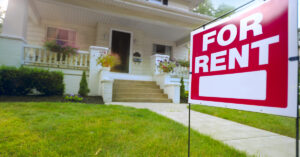The CoreLogic S&P Case-Shiller Index, measuring the growth of home prices nationwide, posted a 6.5% year-over-year gain in March, virtually the same annual pick-up the index saw one month prior.
It’s the ninth consecutive month with annual sales growth, despite the flattening of the growth curve. More notable, though, was the strong seasonal uptick posted by the non-seasonally adjusted month-over-month index, matching the stout jump seen last spring.
“While the CoreLogic S&P Case-Shiller annual growth flattened at 6.5% in March, seasonal price increases continued to push well beyond pre-pandemic levels, up 1.3% (compared to a 0.8% pre-pandemic average),” said Selma Hepp, chief economist at CoreLogic. “Continued home price resiliency amid surging borrowing costs highlights headwinds for the housing market reflected in slow sales activity, namely affordability challenges for potential homebuyers as cost of homeownership continue to skyrocket, particularly homeowners’ insurance and property tax increases.”
While such costs have moved some homeowners and investors to stop holding on to their properties, stickiness in price appreciation has offset the improvement in inventory and left many buyers in somewhat of a holding pattern, anticipating a drop in rates later in the year.
Hepp noted that the impacts of non-mortgage costs on existing homeowners and potential homebuyers alike — particularly homeowners with fixed incomes — has had some effect on geographical divergences in price growth.
“Weakness in low-tier home prices in Tampa highlight some of the potential challenges,” she said. “In contrast, markets in proximity to major employment centers, such as Seattle, Boston, and New York which have benefited from strong labor markets and ensuing wage and wealth gains are helping drive the demand while lack of homes for sale and new construction are putting pressure on prices in these markets.”
According to the latest HPI data, the five markets with weakest home price growth are New Orleans; Austin; San Antonio; Cape Coral, Florida; and North Port, Florida —markets that have either seen substantial gains in supply or are grappling with concerns over rising insurance, maintenance and homeowners’ association costs. Many of those areas are also at heightened risk of severe weather events like hurricanes, which could factor into further home price declines moving forward.
The 10-city and 20-city composite sub-indices, like the national index, also saw their ninth straight month of year-over-year increases in March, growing annually by 8.2% and 7.4%, respectively. The 10-city index is seeing stronger appreciation because it’s limited to more of those aforementioned large employment centers. The 20-city index, on the other hand, includes more cities that saw strong migration (and outsized appreciation) during the pandemic that are now experiencing disproportionate price cooling.






